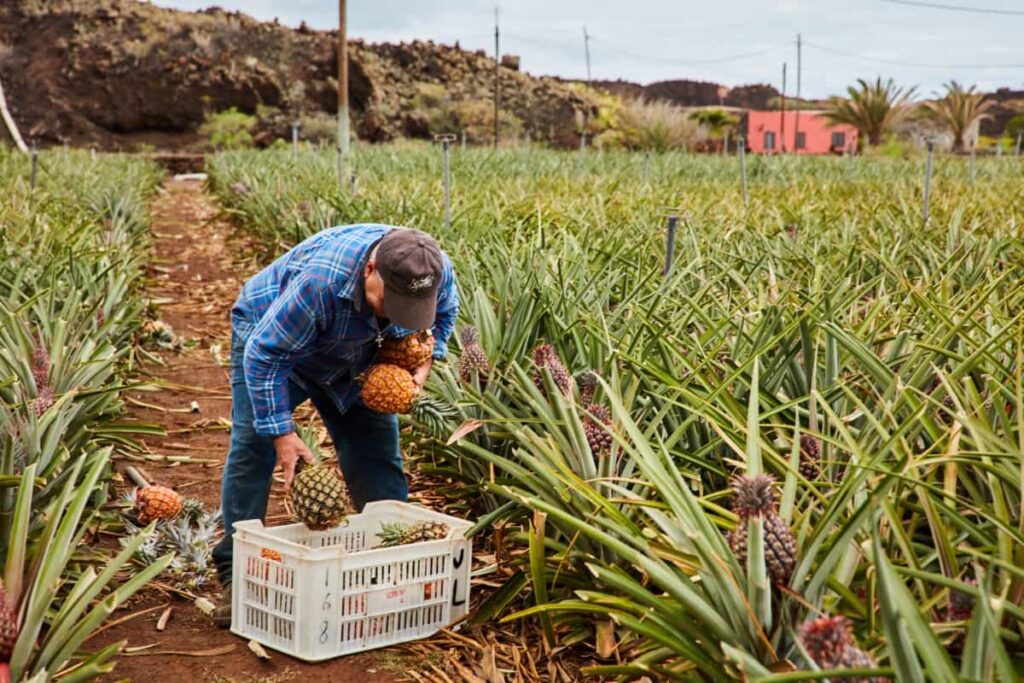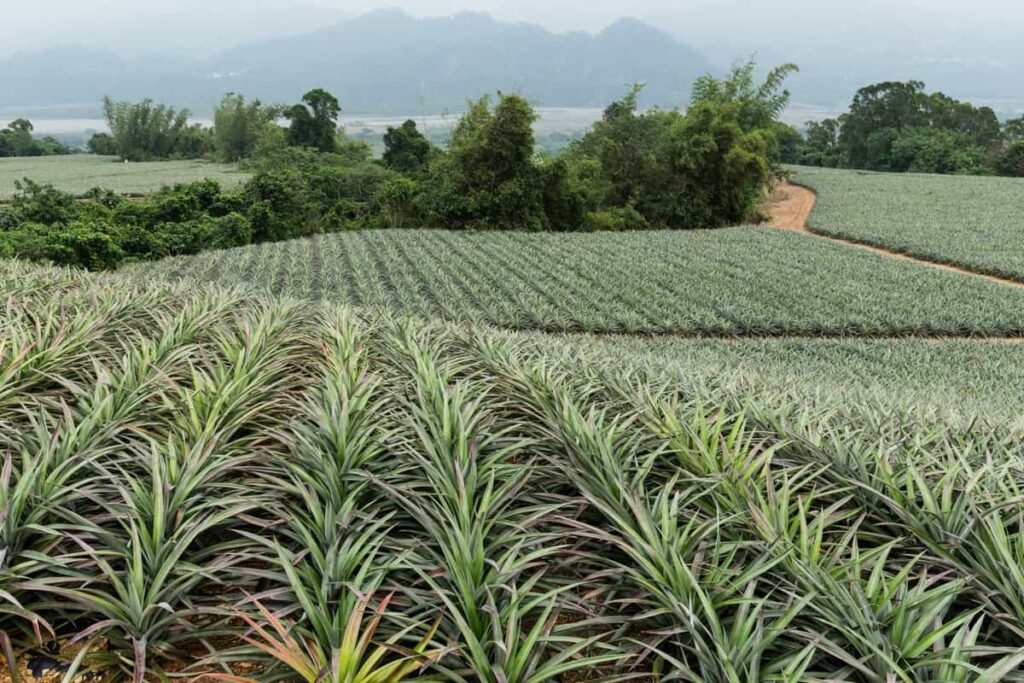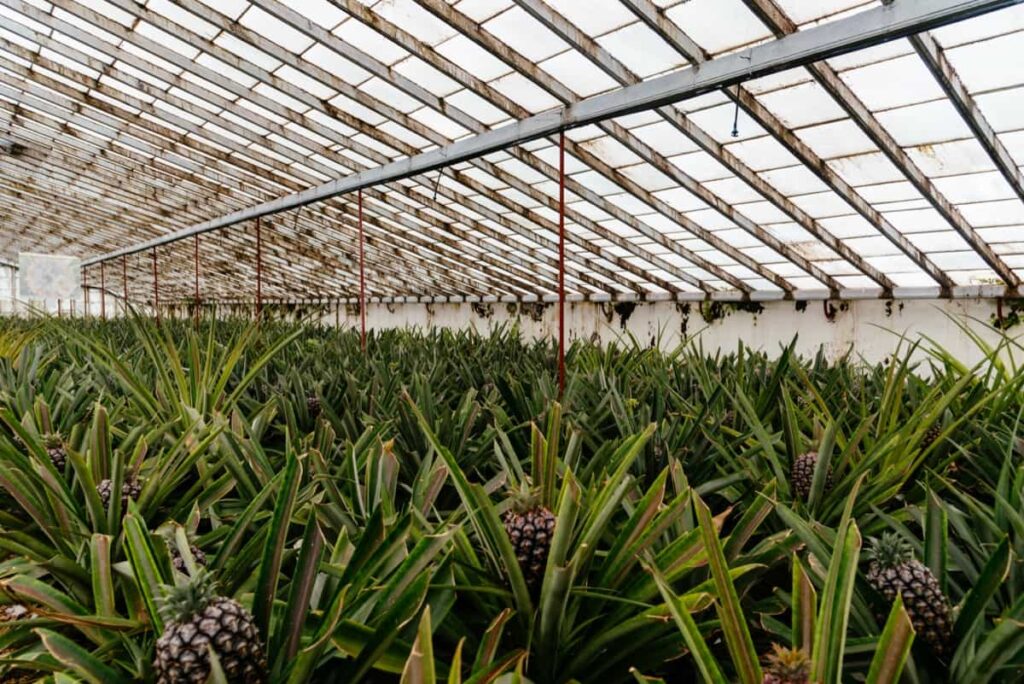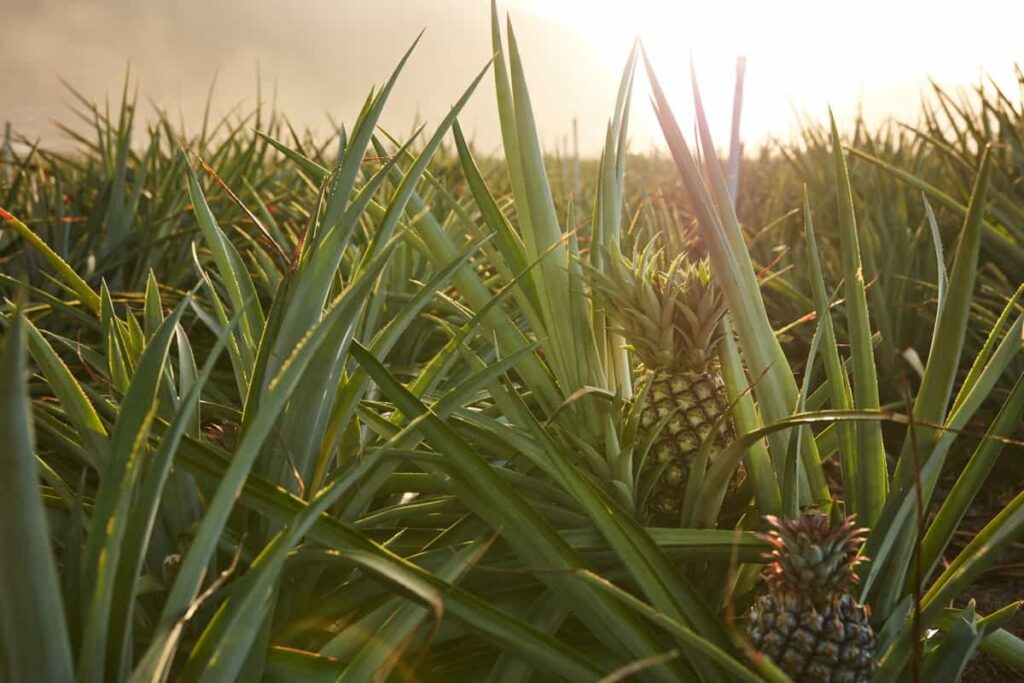Pineapple (Ananas comosus) is a tropical fruit plant in the family Bromeliaceae. This unique plant not only adds a touch of exotic beauty to its surroundings but also provides us with delicious and economically significant fruit. Water plays a main role in Pineapple plant health by aiding in nutrient absorption and photosynthesis.

Assessing Soil Moisture Levels for Optimal Irrigation
Assessing soil moisture levels is crucial in ensuring the health and productivity of Pineapple plants. One common method is to use a soil moisture meter, which provides accurate readings of the moisture content at different depths. Observing plant indicators like wilting or yellowing leaves can also give clues about whether irrigation is needed. Farmers should aim for a balance in soil moisture levels, keeping it consistently moist but not waterlogged. This helps promote healthy root development and optimal nutrient uptake for robust plant growth.
Types of Irrigation Systems Suitable for Pineapple
The popular option is surface irrigation, where water flows over the soil by gravity. This method is cost-effective but can lead to water wastage and uneven distribution. Another effective choice is sprinkler irrigation, which mimics natural rainfall by spraying water onto the plants. While this method efficiently covers larger areas, there’s a risk of water evaporation and leaf wetness-related diseases.
Drip irrigation stands out as a precise technique that delivers water to the plant roots through tubes and emitters. It conserves water, reduces weed growth, and minimizes nutrient leaching. Subsurface drip systems are also gaining popularity for Pineapples. These systems deliver moisture at the root level while minimizing evaporation losses, ensuring optimal hydration with minimal labor requirements.
Designing an Efficient Drip Irrigation Layout
By strategically placing drip lines along the root zone of the plants, you can deliver water directly where it’s needed most. This method helps reduce water wastage and minimizes weed growth by targeting the moisture supply. Consider factors such as soil type, slope of the land, and plant spacing when planning your drip irrigation system. Proper design will prevent overwatering or underwatering, both of which can harm Pineapple plants.
In case you missed it: Growing Pineapple Organically in West Bengal: Farming Practices and Production Guide

Additionally, incorporating a timer or sensor-controlled system can automate watering schedules based on real-time conditions. Drip irrigation layouts are highly customizable and scalable to accommodate farms of varying sizes. Whether you have a small plot or a large plantation, designing an efficient system tailored to your specific needs will promote healthier Pineapple growth while conserving water resources effectively.
Scheduling Irrigation for Pineapple Plants
Scheduling irrigation involves considering factors like soil type, weather conditions, and plant growth stage. It’s crucial to provide the right amount of water at the right time to avoid overwatering or underwatering. Monitoring soil moisture levels regularly is key in determining when to irrigate your Pineapple farm. During hot and dry periods, Pineapples may need more frequent watering sessions, while in cooler seasons, watering intervals may be spaced out. Make sure to keep the soil consistently moist but not waterlogged.
Adjusting your irrigation frequency based on environmental factors can help optimize plant health and fruit production. Young seedlings may require more frequent watering compared to mature plants with established root systems. Planning and staying attentive to your crop’s hydration needs will contribute to successful Pineapple cultivation.
Water Conservation Techniques in Pineapple Farming
Water conservation techniques are crucial to ensure sustainable practices and efficient resource management. One effective method is mulching, which helps retain soil moisture by reducing evaporation. Another strategy is implementing rainwater harvesting systems to capture and store water for irrigation during dry periods.
Utilizing cover crops can also improve soil structure and water retention capacity, reducing the need for excessive watering. Implementing proper drainage systems prevents waterlogging, ensuring that Pineapples receive just the right amount of water they need to thrive. Additionally, adopting precision irrigation technologies such as drip irrigation or micro-sprinklers can help deliver water directly to the plant roots while minimizing wastage.
Managing Irrigation During Different Growth Phases
In the initial stages, young Pineapples require consistent moisture to establish strong roots and healthy growth. As they mature, reducing water frequency can encourage root development and fruit production. Maintaining adequate soil moisture levels during the flowering stage is crucial for proper pollination and fruit set. Adjusting irrigation schedules according to weather conditions and plant needs ensures optimal growth throughout the season. As Pineapples near maturity, gradually decreasing water applications helps concentrate sugars in the fruits for better flavor.
Impact of Water Quality on Pineapple Health
Water quality is important for maintaining the health and productivity of Pineapple plants. Poor water quality can negatively impact nutrient uptake, leading to stunted growth and reduced fruit yields. High levels of salts or toxic elements in irrigation water can harm the roots and overall plant health.
In case you missed it: Optimizing Irrigation Schedules for Coconut Groves for Enhanced Yield

Additionally, water with high alkalinity or acidity levels can disrupt the soil pH balance, affecting nutrient availability for Pineapples. It is essential to regularly test the water source for pH levels, salinity, and other contaminants to ensure optimal growing for your crop. Investing in proper filtration systems or using rainwater harvesting techniques can help improve water quality on your Pineapple farm.
Troubleshooting Common Irrigation Problems
One common issue is clogged drip emitters, which can disrupt the water flow to plants. This problem often arises due to mineral buildup or debris in the irrigation system. Another frequent concern is an uneven distribution of water across the field. It can lead to some plants receiving too much water while others remain parched. Adjusting the layout and pressure of the irrigation system can help address this issue effectively.
Additionally, overwatering or underwatering Pineapples may cause stress and affect their growth. Furthermore, leaks in pipes or fittings can result in the waste of water resources and negatively impact plant health. Conducting regular inspections and repairs can prevent such issues from escalating. Being proactive in identifying and resolving common irrigation problems is essential for ensuring healthy Pineapple crops and maximizing yields.
Adapting Irrigation Practices to Climate Variability
Climate change can be affected by unpredictable weather patterns, including fluctuations in rainfall and temperature. As a Pineapple farmer, you need to be proactive in adjusting your irrigation strategies to meet the changing needs of your plants. One way to adapt is by investing in smart irrigation systems that can automatically adjust watering schedules based on real-time weather data.
This technology can help optimize water usage and prevent both under and over-watering, which are common issues during periods of climate variability. Furthermore, implementing rainwater harvesting methods can provide an alternative water source during times of drought or water scarcity. By collecting rainwater runoff from roofs or other surfaces, you can supplement your irrigation needs without solely relying on traditional sources like wells or municipal supply.
In case you missed it: Bloom All Year Round: The Ultimate Guide to Indoor Hyacinth Care

Proper irrigation is crucial for ensuring healthy plants and high yields. Efficient irrigation practices not only promote optimal plant growth but also help conserve water resources. By carefully monitoring soil moisture levels and implementing suitable irrigation systems, farmers can ensure sustainable cultivation practices while maximizing crop productivity.
- Profitable Village Farming Business Ideas in 2024
- High-Yield Aquaculture: Fast-Growing Fish for Farming
- Effective Fish Pond Construction Techniques for Beginners
- Irrigation and Water Management in Pineapple Farming
- Blossom to Harvest: Mastering Flowering and Pollination in Papaya Farming
- Pig Fattening Essentials: From Selection to Sale for Beginners
- Raising Wagyu Cattle: A Complete Guide for Premium Beef Production
- Soil Types and Their Water Holding Capacity
- Optimizing Irrigation Schedules for Coconut Groves for Enhanced Yield
